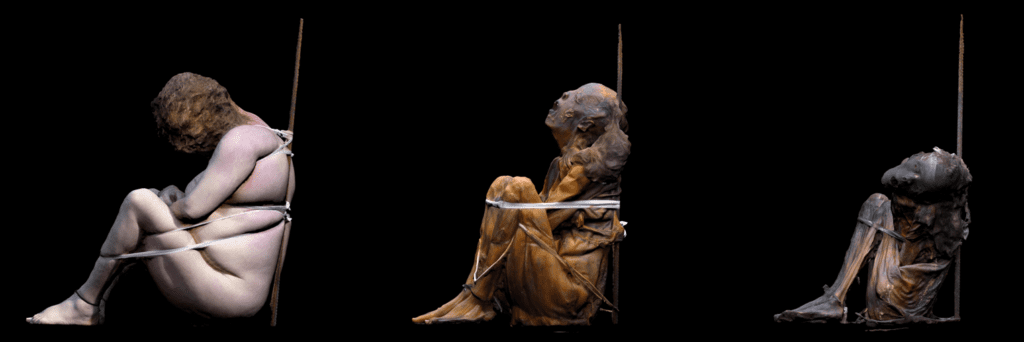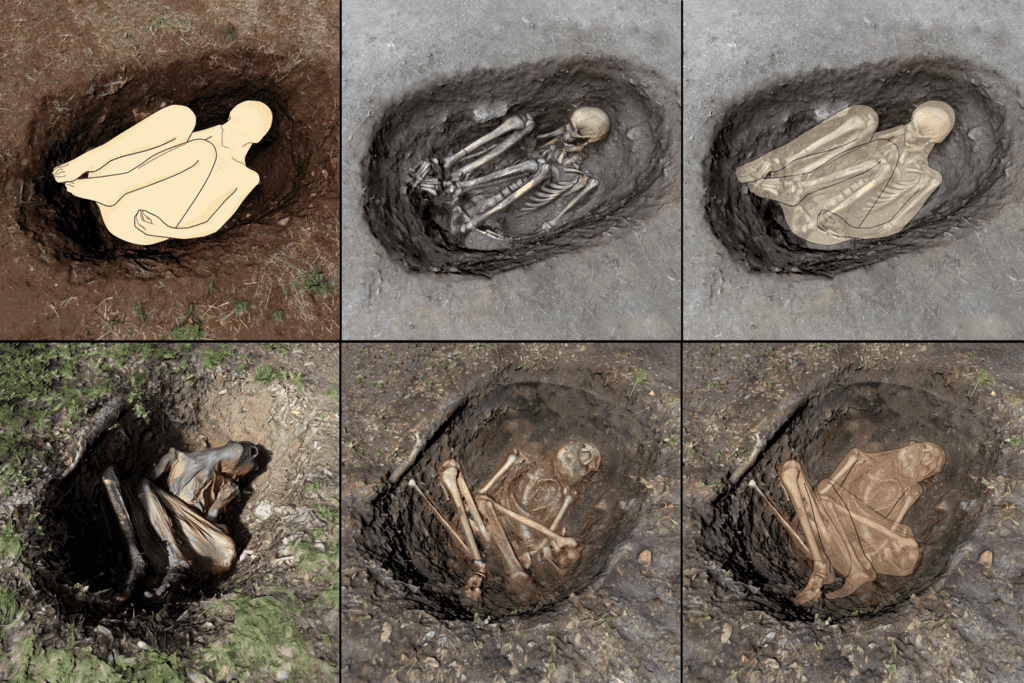After they revisited photos of ancient human skeletons first exhumed in Portugal’s Sado Valley in the 1960s, archaeologists now believe that the 8,000-year-old remains went through a mummification practice before their burial. This would make the remains the oldest evidence for Mesolithic mummification in Europe. In fact, it could very well be the earliest evidence of mummification in the world.

The oldest evidence of deliberate mummification in Egypt, the most famous region in the world for mummies, is about 5,500 years old. However, researchers believe mummification may have been much more common during prehistoric times and could in fact be much older — it’s just that evidence is hard to come by due to the fragile nature of mummified tissue.
But using a clever technique, it may be possible to tell whether decomposed remains may have originally undergone mummification, significantly extending the timeline of such burial practices.
Excavations in the Sado Valley in southern Portugal, at the sites of Arapouco and Poças de S. Bento, between 1958 and 1964 recovered more than 100 skeletons dating between 8,000 and 7,000 years ago. Unfortunately, much of the original documentation for these extraordinary finds was lost, including photographs, site plans, and field drawings.
That’s until João Luís Cardoso, an archaeologist at the Open University in Lisbon, came across three rolls of film while studying a local archive.
These verified photos depict 13 bodies exhumed in 1961 and 1962, which Cardoso and colleagues used to reconstruct their likely burial positions using an archaeothanatological analysis. Based on knowledge of natural decay processes, this method has made it possible to reconstruct in detail how humans have historically dealt with their dead.

In addition to observations about the spatial distribution of the ancient bones from Sado Valley, forensic anthropologist Hayley Mickleburgh performed decomposition experiments to predict how human corpses pin different burial positions could look like if they had been mummified or not.
Together, these observations suggest that some of these remains must have been mummified. Although there was no soft tissue left, the archaeologists reached this conclusion based on deductions from indirect evidence like the position of the bodies, with their knees bent and pressed against the chest, as well as the presence of sediment infill around the bones and the absence of disarticulation. An unprepared decomposing corpse will disarticulate at weak joints relatively quickly after its burial, but mummified bodies still preserve articulation.
The authors of the new study believe that before being buried, the desiccating bodies were gradually tightened with ropes, binding the limbs in place and compressing the remains into the desired position. This would explain some of the signs of mummification, which was likely performed to ease transport to the grave and to preserve the shape of the body in life after burial.
Overall, the Portuguese researchers strongly believe that prehistoric mummification may have been much more widespread across the world than previously thought, despite the lack of direct evidence of soft tissue. This is why follow-up observations of ancient archaeological sites using archaeothanatological analysis are paramount in order to uncover new robust evidence of pre-burial practices in prehistory. In other words, this may just be the beginning of a new exciting phase in mummy archaeology.
Whether or not the Sado Valley burials represent the oldest mummies in the world discovered thus far remains contested. The oldest confirmed mummies in the world are the 7,000-year-old Chinchorro mummies, found on Chile’s coast. But people likely mummified their dead much earlier than that, even in hunter-gatherer communities.
The findings appeared in the European Journal of Archaeology.
Was this helpful?



